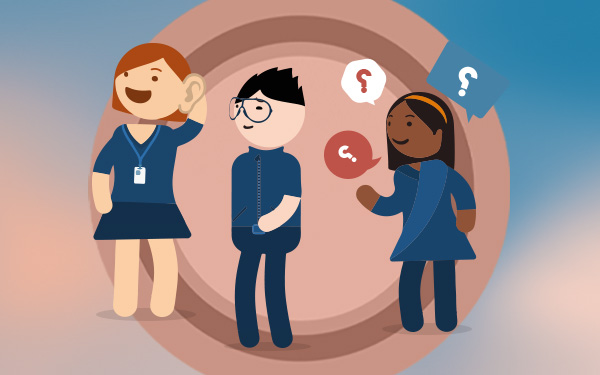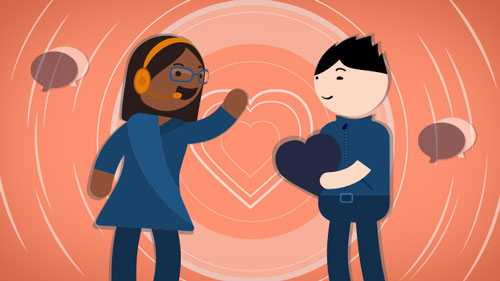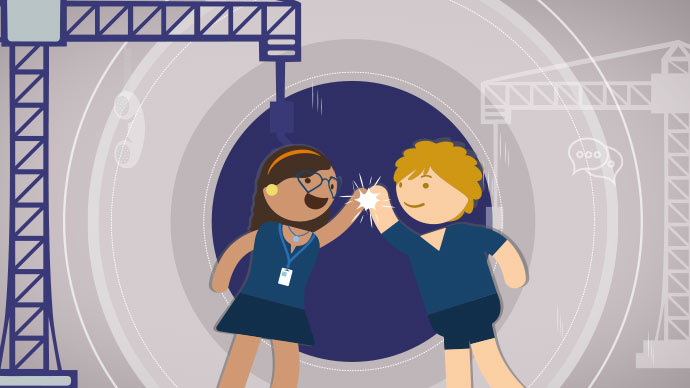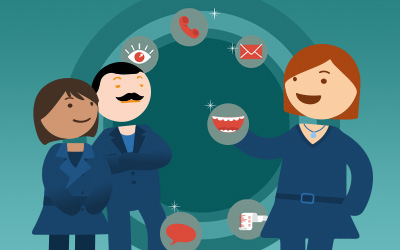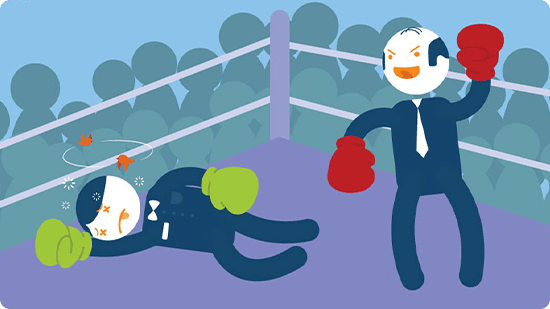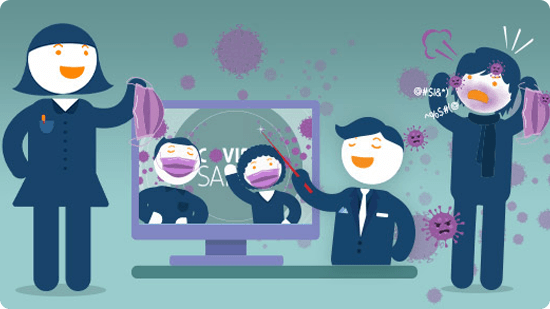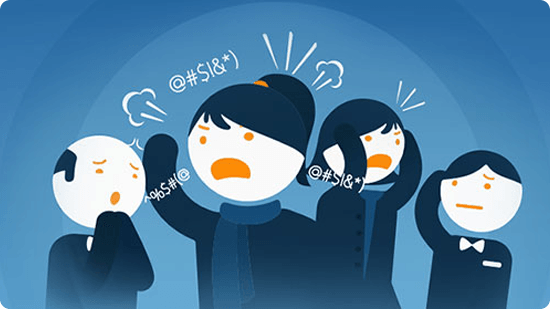We get it: not every customer is going to be a delight to deal with. Maybe a transaction started way out of line with their expectations; they might feel like you’ve done wrong by them; or they could just be giving up coffee and going through withdrawals. In any case, the most important factor in dealing with difficult customers is to realise:
It’s never about you. It’s always about resolving the situation.
In this guide for dealing with difficult customers, the very talented and attractive team at Canity have put together some simple tips that everyone working in customer service, retail or hospitality should use.

Step 1 – Let Angry Customers Vent
This part is the worst part – trust me. And it’s not really that bad – but it is important.
When you let an angry customer vent their feelings, here’s the essential part: give them your full attention. For one, you’ll deplete their energy like some sort of jiu-jitsu master. Ideally they need to vent all their anger in one burst, after which you can focus on the solution.
Some say the customer is always right…
but some customers can be rude, vindictive and actual liars.
You may feel compelled to interrupt as they recount what’s transpired. Don’t. Even when they’re flat out wrong. The only reason to break this rule is if they are being verbally abusive (more on this situation below).
The main thing is: if you want to raise an issue, leave it until they’ve finished. We recommend making notes as they speak. When they have finished speaking leave a second or two of silence and make your initial response an empathetic one: let them know:
“I’d be upset too, if that had happened to me”
Allowing them to get it all out of their system reinforces the fact you have listened intently and almost certainly will have a full understanding of their complaint.
Step 2 – How to Apologise to Customers
No matter what your role is within your organisation, an apology will almost certainly be within your capacity. A well delivered, sincere apology will always go some way towards appeasing an upset customer. The way you phrase your apology will determine how successful it is.
These suck.
“I’m sorry you feel that way,”
“I’m very sorry about that!”
They don’t involve the customer. They are merely statements about how you feel. Instead, phrase your apology such that you give the customer the power to forgive you…
Better:
“John, please accept my apologies for the error.”
“I understand how upset you must be, I’d be upset too and I apologise that this has happened. Will you give me a chance to sort this out for you?”
Both require the customer to respond. It will help to calm the customer and allow them to feel like they have a level of control. If they accept this request you can move on to a solution. If they don’t, you will need to patiently continue to let them vent their anger until they are calmer.
Step 3 – Ask the Customer What They Want
If you don’t know what they want, you can’t give it to them, right?
Often difficult customers haven’t clearly outlined their expectations, and because they aren’t getting what they want, they become frustrated. This also applies to customers who think that using their anger, like the Hulk, will get them what they want.
Rather than guess what will appease your difficult customer, come straight out and ask them. Try something like this:
“What would you like me to do to rectify this matter?”
This is a better alternative to throwing up solutions just hoping one sticks, and it gives you a starting point for any negotiations. It’s simple, but it’s a superhero move.
Step 4 – Focus on the Solution
Your focus when dealing with a difficult customer is to resolve their issue and ensure their return patronage.
Now, you may not have made the error, your organisation may not even be at fault, but if you’re handling the complaint you need to focus on the customer’s desired outcome. Even if the customer wants to keep talking about the problem, don’t let them.
Focus on the solution, knowing that if you can solve the problem, you stand a chance of getting them back as a repeat customer.
*A Note on Abusive Language
No one should have to put up with foul language or abuse from a customer. If you find yourself in this situation, you’re totally within your rights to interrupt the customer.
“John, while I am more than happy to help you, I cannot do so if you continue to swear. Is that understood?”
The last part is important. You need them to confirm that they understand. If the caller’s behaviour does not change, you should be very clear about what will happen if they continue.
“John, I want to help you but I simply cannot if you continue to swear at me. If it happens again I will have no option but to terminate our discussion. Is that clear?”
Take confidence that the swearing really isn’t helping resolve the situation. You’re not being paid to be a verbal punching bag: putting your foot down is the only way to keep your dignity and prevent customers from embarrassing themselves further.
Just make sure you’ve put it in the nicest possible way.
If this doesn’t work, you could simply state… “John, you’ve left me no alternative but to terminate our conversation,” and walk away, or if you’re on the phone, hang up.
One of the biggest issues in customer service right now is how to encourage customers to wear masks and what to do when they refuse. It’s a safety issue, it’s a political issue and it’s a big concern to the community, customers and staff. You can read our step by step guide on how to handle this here.
If you want to find out more about how to handle difficult customers check out our short, practical, easy to understand Dealing with Customers video training lessons in our Training Library
With Canity’s online training platform you’ll find in depth training on a range of customer service related topics. Plus, topics aimed specifically at business areas including phone etiquette, retail skills, sales and email skills.


